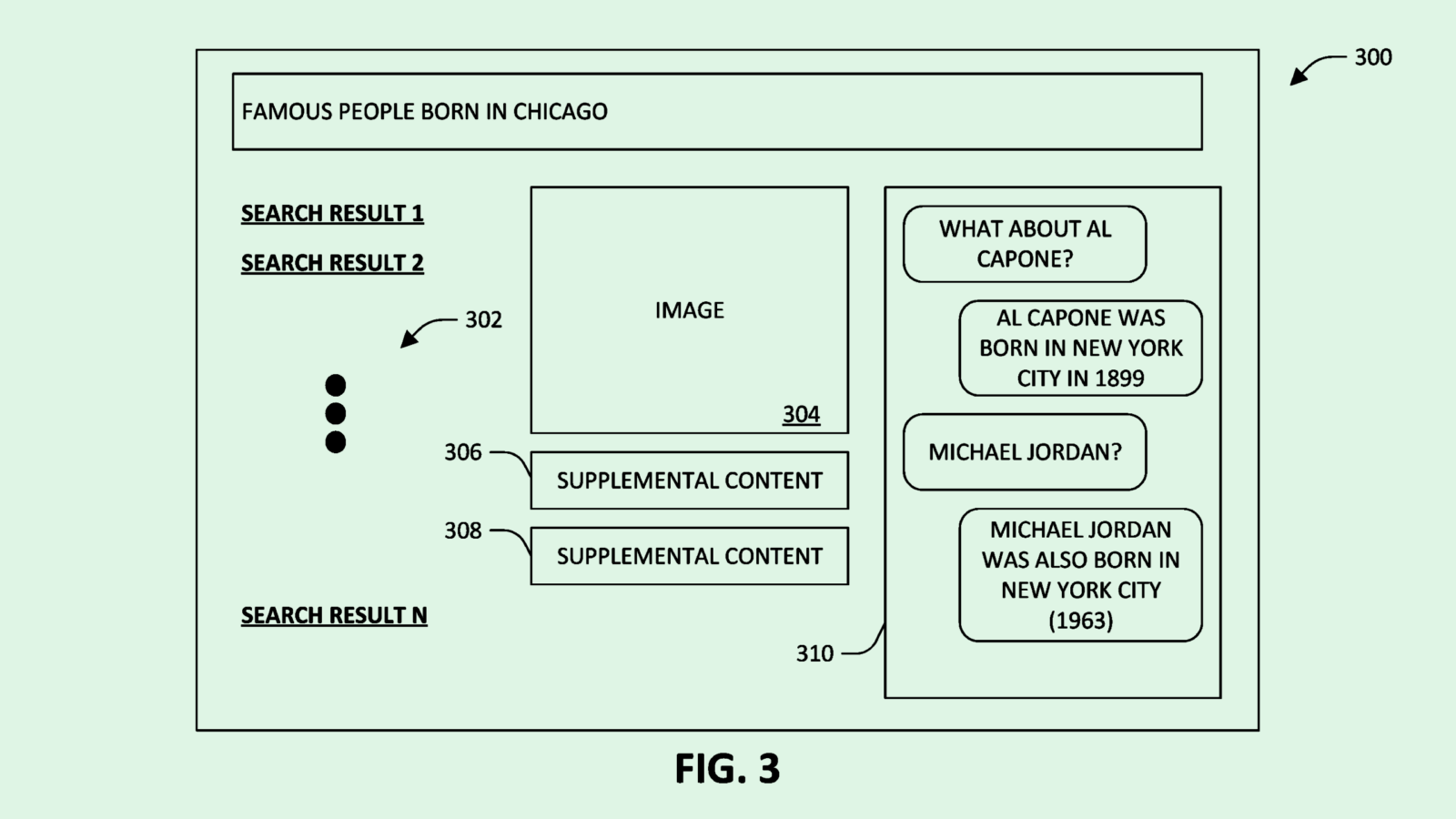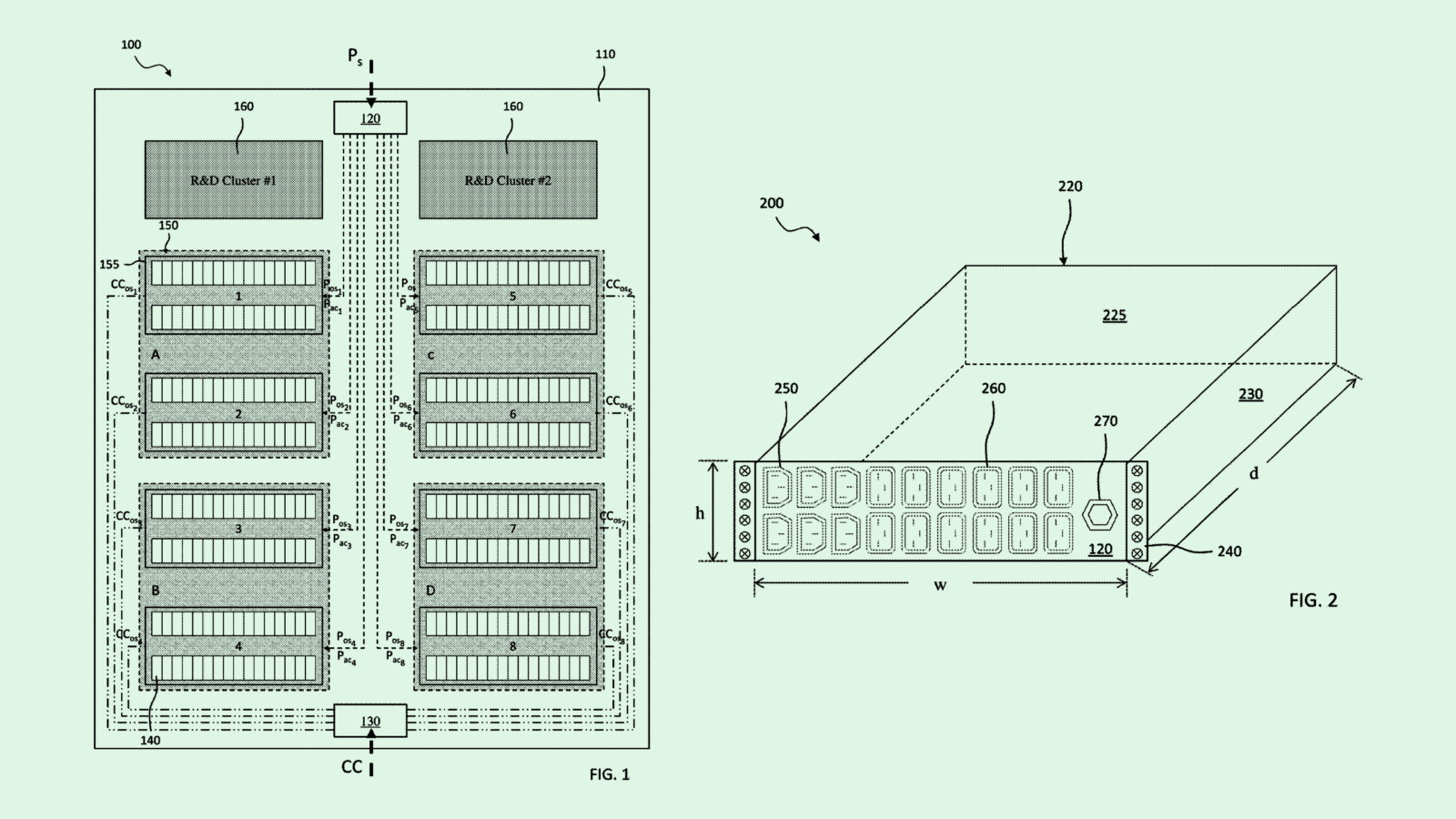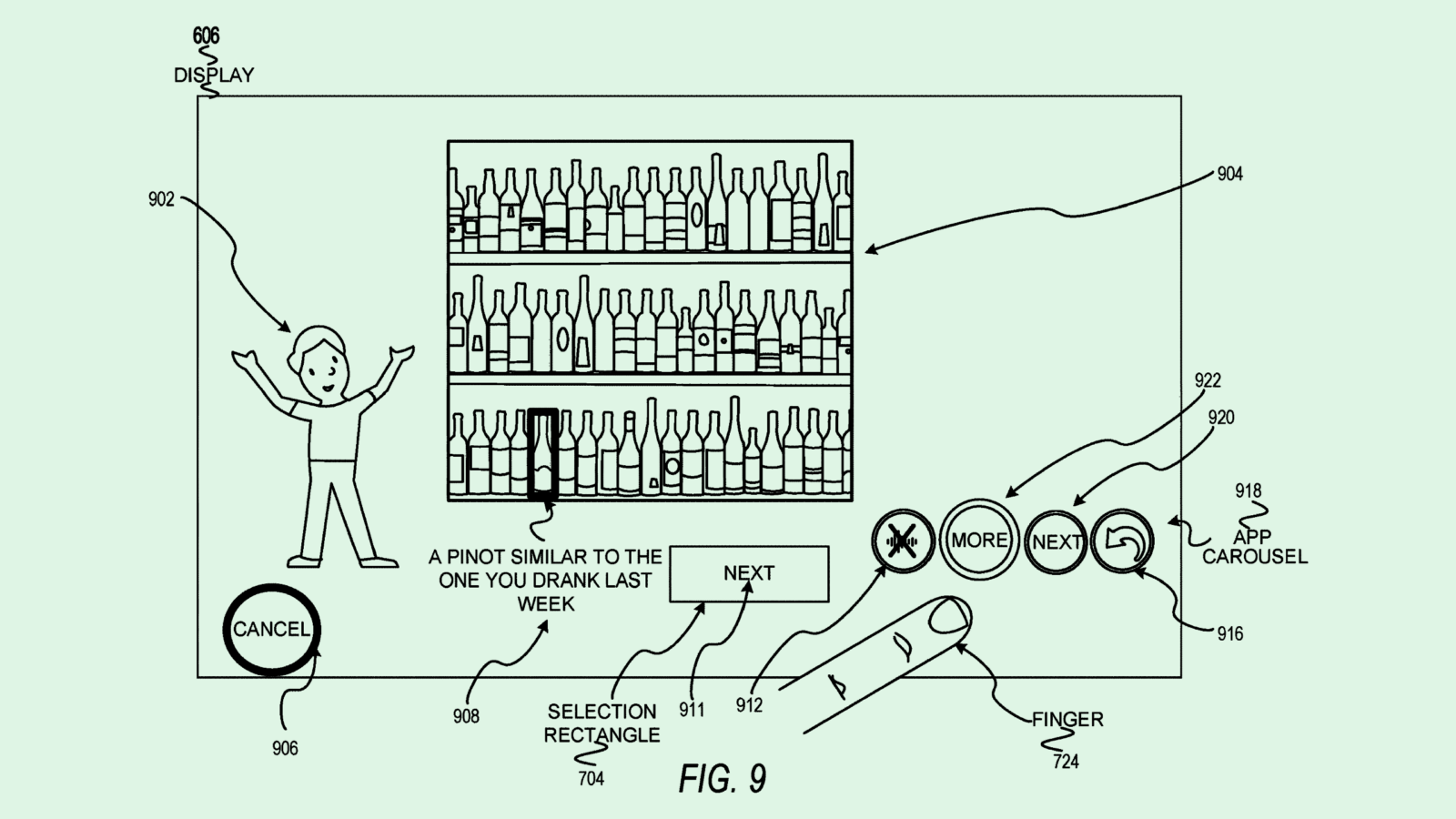Happy Monday and welcome to Patent Drop!
Today, Microsoft’s generative AI search patents could help it gain ground against Google — especially amid its recent antitrust loss. Plus: Nvidia makes data centers smarter, and Snap brings voice control to AR.
Let’s get into it.
Bing it On
Google has long had a stranglehold on search. But amid its antitrust shakeup, it may be Bing’s time to shine: Microsoft filed several patent applications aiming to beef up its search engine with generative AI.
“Both conventional search engines and generative models are deficient with respect to identifying and/or generating appropriate information in response to certain types of user input,” Microsoft noted in its filings. Its patents aim to give these technologies a symbiotic relationship.
To start, the company is seeking to patent a system for “informational grounding” with respect to a generative model. This filing essentially describes a way to meld search engine queries with output from an AI model.
When a user first searches something, Microsoft’s tech runs a typical search query to dig up appropriate web pages or data. That information is sent to a generative model, alongside the initial query, to synthesize the information and answer the user’s question.
The company also filed a similar patent application for generating a “semantic search engine results page.” Like the above, this tech would use a generative model to summarize results from a classic search engine. This patent, however, places a deeper emphasis on contextual and reference information; it also has a wider scope, potentially for implementation beyond just a search engine.
And finally, Microsoft wants to patent a system for streaming a series of chats in a “SERP,” or a search engine results page. This filing describes a turn-based chatbot that essentially allows a user to go back and forth about information found in search results.

None of these patents are particularly surprising. Microsoft has been touting AI upgrades for Bing since last year, and generative AI-based search has gained ground in recent months with Google introducing its own AI search function and OpenAI working on SearchGPT.
AI has started to change the demands for search engines entirely, said Thomas Randall, advisory director at Info-Tech Research Group. “The trend is shifting from the search engine to the answer engine,” he said.
But with the recent court decision that Google’s search engine dominance violates antitrust laws, the market may soon be turned on its head. U.S. District Judge Amit Mehta, who issued the ruling, wrote that “advertisers consistently testified that shifting significant ad spending from Google to Bing would be ineffective (and unwise) because of Bing’s lack of scale.”
While the penalties that Google will face are still up in the air, the ruling could open a door for Microsoft, said Randall. The problem, however, is that Google has a “cultural dominance” that has stood unrivaled for years. Upending that isn’t going to be easy, he said. “[‘Google’] is a verb. We don’t say, ‘Let’s Bing it.’ But the barriers to entry are certainly lower.”
“The way in which we look for information is changing as well, and part of that is because most organizations, especially large enterprises, are going to be using Microsoft Copilot … I think there is an opportunity there,” said Randall.
However, adoption could be a double-edged sword. Google was forced to roll back its AI search function after facing backlash for hallucination and mistakes. If the antitrust changes put Bing center-stage, there’s no telling if it’ll be able to avoid Google’s missteps, said Bob Rogers, Ph.D., the co-founder of BeeKeeperAI and CEO of Oii.ai.
“Nobody has a good solution for hallucination,” Rogers said. “But they’re in the position that, if they get to that technology first, they could overcome the barriers that they have to be seen as a frontrunner.”
Nvidia’s Design Control
Nvidia wants to control data centers from the ground up.
The chip giant filed a patent application for an “intelligent data center.” This tech would essentially control data centers’ power resources down to the server racks, allowing them to intricately adapt to fluctuating power demands.
“Today’s data centers are not designed to efficiently handle the ever increasing and continually changing power demand,” Nvidia said in the filing.
Typically, data centers are designed to handle the maximum possible demand, leading to higher than necessary energy spend. Nvidia’s patent proposes a system that, rather than equally distributing power and cooling resources among all of a data center’s server racks, would shift power between server racks as necessary – without needing to make significant physical changes.
Nvidia’s tech would do this by calculating the average power demand for each cluster of server racks, and shifting more or less power and cooling in between them in relation to other surrounding server racks. For example, if one cluster of server racks is experiencing above-average power demand while two others are sitting idle, rather than allotting them equal power, some resources may be transferred to the servers that are working overtime.
While over-engineered and rigid data centers are “not only expensive to manufacture, but in the general use case, are incredibly inefficient and expensive to operate,” this tech overcomes that by providing a level of flexibility and “degrees of freedom,” said Nvidia.

This isn’t the first time we’ve seen Nvidia seek to fix data centers’ energy problems. It’s previously sought to patent a way to power down “idle cores” within these server farms, as well as a “health monitoring” system for data centers.
And it makes sense why Nvidia is researching this technology: Its chips are the mitochondria of the data center. With the rising demand of generative AI, the company’s data center revenue has been eye-popping in recent quarters: It reached $22.6 billion in quarterly earnings, reported in May, and $18.4 billion in the quarter prior, up more than 400% year-over-year for both periods.
But with its next earnings report coming at the end of August, some fear that the AI boom is nearing a bust — and Nvidia may feel the impact. However, a concept in this patent may actually help Nvidia maintain its winning streak: “design control,” said Trevor Morgan, senior vice president of operations at OpenDrives.
This patent highlights what Morgan called the “Nvidia way” of running a data center, aiming to demonstrate thought leadership, especially amid mounting worries over the energy costs of data centers.
“They’re creating a framework for the smart data center,” said Morgan. “They’re getting out in front of this and saying, ‘This is what the design should look like.’”
However, because Nvidia’s chips are so ubiquitous, controlling the way that data centers are designed would only serve to grow the tech giant’s influence, said Morgan. “It’s a small investment for them to test out the limits of where they can go with their business’s influence. That’s why I thought this was really powerful and really multifaceted.”
Snap Gets Vocal
Snap wants you to feel heard.
The company filed a patent application for “voice input for AR wearable devices,” referring to its smart glasses. Snap’s tech aims to give its users more control over their augmented reality interfaces.
“Often, the wearable devices have very little room for interface controls on the wearable devices,” Snap said in the filing. By using voice control, this tech allows users to “operate [these devices] in a more user-friendly manner.”
Like many voice assistants, Snap’s tech would rely on a specific command or wake phrase (such as “Hey, Spectacles”) to kick into gear. A “keyword module” is trained to recognize that specific wake phrase, “and, in some embodiments, only the keyword,” said Snap. “This reduces the power needed to process the audio data.”
A second module then listens and analyzes the audio data containing the command itself. Snap’s tech may send this stream of audio to an external system for processing as a means of saving the glasses’ processing power, which is especially helpful for more complex commands.
Additionally, Snap’s tech would include an “application registry,” which connects different commands with different apps. For example, if you’re wearing a set of AR glasses that connects to a music app, it may associate actions such as “play” or “next song” with that app. If you’re playing an AR game within the glasses, it may associate different voice commands with actions during play.

Snap’s tech isn’t entirely revolutionary. Plenty of companies have wakeword-powered digital assistants, and Meta’s collaboration with Ray-Ban for voice-controlled AI smart glasses is quite similar to Snap’s pitch (minus the AR visuals). And if we’ve learned anything from Meta’s artificial reality bet, it’s that it costs a lot of money — $4.5 billion in the recent quarter and $50 billion cumulatively.
Snap, however, has been playing in this space for years. The company dropped its first pair of Spectacles in 2016, and has steadily been releasing new editions and filling up its stable of patents with things like AR hand control, gaze-tracking techniques, and high-tech prescription lenses since. However, little has come of these exploits, with the company pivoting its attention to AI to advance its AR efforts.
So what will it take for Snap to see a return on its investment? In the case of smart glasses, form factor is everything, said Jake Maymar, AI strategist at The Glimpse Group. In order for people to actually want to wear these devices, they need to last long, have little to no latency, and be “camouflaged” as a pair of normal glasses, he said.
“Whoever gets to augmented reality glasses that are fashionable and lightweight wins,” said Maymar. However, when accounting for AR visuals as Snap’s patent aims to, the tech hasn’t quite reached that point yet — at least not affordably, he said.
The other problem is the company’s core audience, said Info-Tech’s Thomas Randall. Unlike the broad audience that Meta’s series of apps commands, Snap’s audience skews far younger, he said, and generally doesn’t have access to the income necessary to splurge on expensive headgear. The question remains, Randall said: “Who’s your target audience for it? Does the technology justify the cost?”
“It doesn’t look like it’s going to be paying off in the short term,” Randall said. “They’ve been investing in this technology for a number of years. So how much longer are investors willing to tolerate?”
Extra Drops
- Apple wants to make sure it can reach you. The company is seeking to patent techniques for supporting emergency SMS in “limited-service scenarios.”
- eBay wants to take the work out of listings. The secondhand e-commerce firm filed a patent application for “smart listing creation based on machine learning analysis.”
- IBM wants to keep your password safe. The tech firm filed a patent application for a system to prevent “password cracking and acceptance of cracked passwords.”
What Else is New?
- Susan Wojcicki, former CEO of YouTube, died at age 56. Wojcicki led YouTube for a decade as one of the few female CEOs of a major tech company in Silicon Valley.
- Meta and Universal Music Group signed a multi-year agreement to “evolve the creative and commercial opportunities” for artists across Meta’s apps.
- X, formerly Twitter, has been hit with nine privacy complaints after using the data of EU users without consent to train AI models.
Patent Drop is written by Nat Rubio-Licht. You can find them on Twitter @natrubio__.
Patent Drop is a publication of The Daily Upside. For any questions or comments, feel free to contact us at patentdrop@thedailyupside.com.
